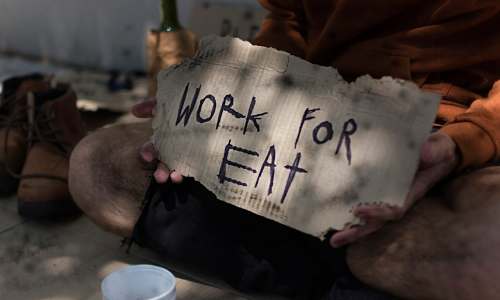India’s Poverty – A Persistent Challenge
With over 1.3 billion people residing within its borders, India has had its fair share of fluctuating poverty rates over the last decades.
These changes have their influences from many factors: economic policies, social programs, and world events, among others. This paper provides a major overview of how the trend in the rate of India’s poverty has been shaping up and what critical factors have influenced this journey.
India – Trends in Poverty Rates

The poverty levels have changed a lot in India since its independence in 1947. At first, India struggled with the aftereffects of colonial rule: economic stagnation and widespread poverty.
During the 1950s and ’60s, policymakers tried to establish a planned economy oriented toward industrialization and agricultural self-sufficiency. Despite all these initiatives, due to small economic growth, resources were distributed so badly that poverty continued to be very high.
In the 1970s and 80s, the government actively initiated more aggressive programs for poverty alleviation, including land reforms and food distribution schemes. These programs indeed had mixed results, with large regional differences in their impact. Rural poverty, in particular, remained unusually high due to low agricultural productivity, generally inadequate infrastructure, and a general lack of access to education and healthcare.
The Impact of India’s Economic Reforms from the 90s
The 90s were a milestone in India’s economy. The policies of liberalization led to a growth rate of over 6% per annum for many years after the reforms were implemented.
As this growth was a very strong factor in employment and income enhancement for large numbers of Indians, it had a very salutary effect on poverty reduction.
Urban areas, particularly metropolitan cities such as Mumbai, Delhi, and Bangalore, fared better in terms of economic growth than rural areas.
Factors Leading to Changes in the Poverty Rate
There have been several critical factors influencing the trend in India’s poverty rate for these years. The factors range from economic growth to government policies and social and demographic changes.

Economic Growth – Employment
Economic growth has been one of the basic factors leading to poverty reduction in India. The extra income and improved living standards created by the expansion of the economy particularly in the information technology, manufacturing, and service sectors-offered new jobs to many.
Nevertheless, most of the jobs created differ greatly in their quality, as the greater part of the workforce is still employed in low-wage and unsecured jobs or without benefits in the informal sector. This inequality in the quality of employment has translated into overall poverty rates falling, though economic vulnerability among a high proportion of the population remains high.

Government Policies – Social Programs
Successive Indian governments have implemented a range of policies aimed at alleviating poverty and raising living standards. Programs such as MGNREGA, which guarantee at least a hundred days of wage employment to rural households, have ensured that the poorest of the poor have coping mechanisms in their hands. Likewise, programs such as the PDS system and subsidized food have helped feed millions.
However, such programs have not been devoid of various challenges. Commonly cited reasons that limit their efficacy include corruption, bureaucratic inefficiency, and unequal access. Besides, while such programs have eliminated poverty concerns immediately, they do not always successfully eliminate deep-seated structural issues contributing to the creation of long-term poverty.

Demographic Changes – Urbanization
The emerging demographic profile of India has been a very significant factor in determining the course that poverty has taken. For example, the rapid increase in population from the middle to the late 20th century put enormous pressure on resources and public amenities. Recent trends are pointing to a slowdown in this growth rate, which, if sustained, may relax pressures over the longer term.
Urbanization has proved to be a two-edged sword in the battle for poverty reduction. On the one hand, cities become the center of economic activities and opportunities as it attracts millions of rural migrants searching for a better livelihood. On the other hand, rapid urbanization resulted in the growth of informal settlements and slums with generally sordid living conditions and limited access to basic services.
Conclusion
The process of reducing poverty in India has been quite complex and multifaceted. While there have been substantial improvements recorded at certain specific periods, especially during the recent decades, some areas and subjects are still very serious challenges. Knowledge about historical trends and factors of influence poverty rates will better equip India with the ability to attain sustainable and inclusive economic growth.


